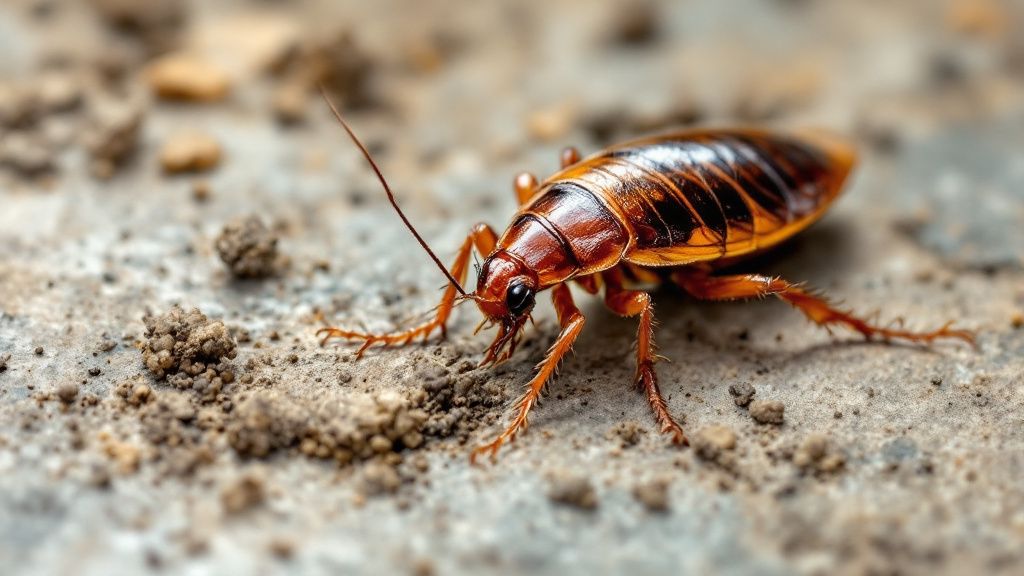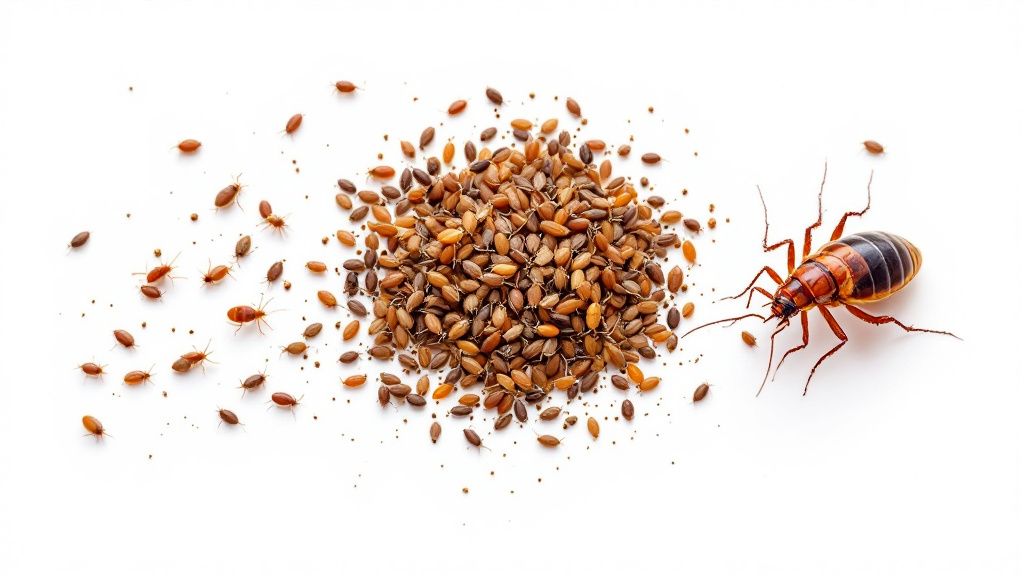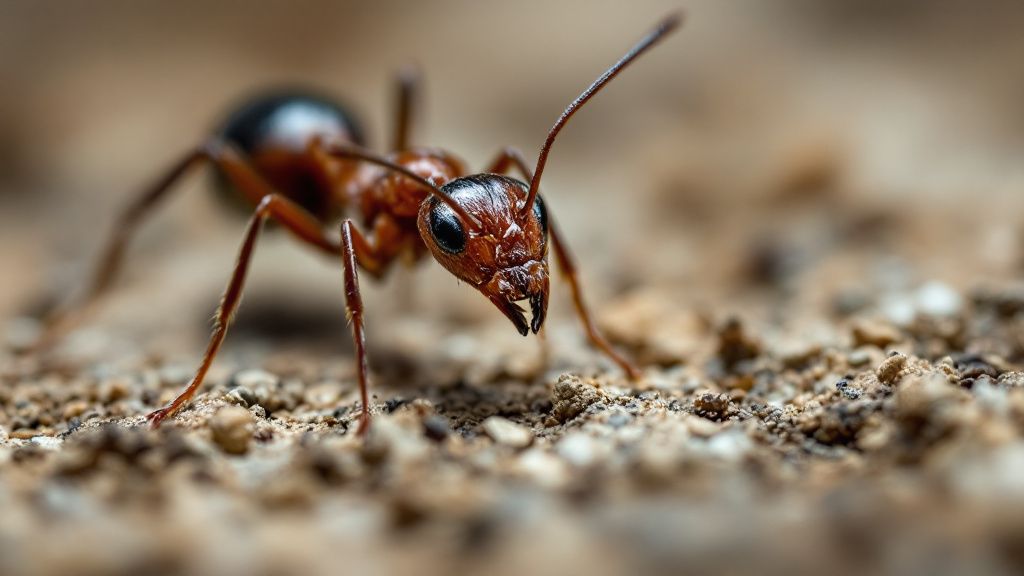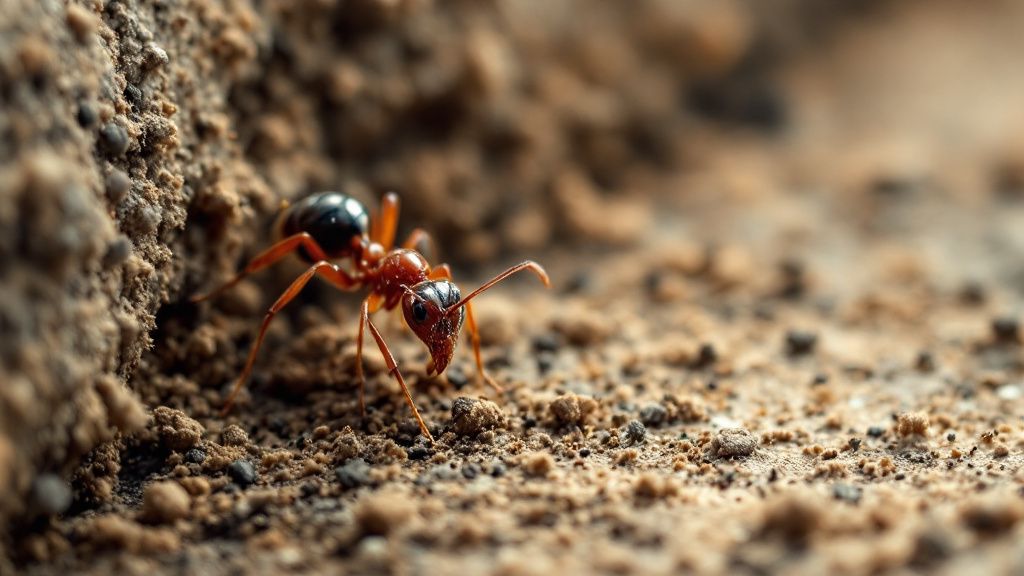Unseen Invaders Navigating the World of Roaches Ants and Bed Bugs
As you go about your day, unseen invaders such as roaches, ants, and bed bugs quietly navigate the spaces around you, weaving through darkened crevices and hidden retreats. These resilient pests are adept at infiltrating homes and businesses, drawn by food, warmth, and shelter. Roaches are particularly fond of moist, dark environments, while ants often march in single file, creating trails to and from food sources. Meanwhile, bed bugs hide in the nooks and crannies of your bed, biding their time for their next meal. Understanding these pests’ habits is crucial for addressing infestations effectively. Discovering how to get rid of roaches and knowing when to utilize bed bug inspection services is essential for maintaining a peaceful, pest-free environment.

Understanding the Habits of Roaches
In the dim corners of your home, roaches thrive by exploiting their nocturnal nature and affinity for warmth and shelter. These pests can go without food for a month, but need moisture to survive, often leading them to kitchens and bathrooms. Recognizing their habits helps in strategizing how to get rid of roaches effectively, focusing efforts on areas where they’re most likely to be found.
The current trend in roach behavior shows a marked adaptation to urban environments, where they have increased access to food and nesting sites. Roaches are known for their evasive tactics, often slipping into cracks and under appliances. By understanding their need for warmth and darkness, you can target specific areas for treatment, thereby disrupting their comfortable living arrangements.
Implementing practices like regular cleaning, sealing entry points, and appropriate storage can disrupt a roach’s lifecycle in your home. Trend analysis in pest control highlights the growing reliance on integrated pest management, combining chemical and non-chemical tactics to effectively tackle infestations. Combining these methods can support sustainable solutions, ensuring that the roaches’ preferred habitats remain inaccessible.

Effective Roach Control Strategies
To effectively manage roach infestations, you must approach the issue on multiple fronts. Start with preventive measures, such as sealing cracks and crevices where these pests might find entry. Regular cleaning and proper storage of food are crucial to minimizing their access to sustenance. These actions form the backbone of a strategy aimed at maintaining long-term control over roach populations.
On one hand, traditional pest control methods, like chemical sprays, provide immediate relief and are often seen as a quick fix for how to get rid of roaches. On the other hand, proponents of natural pest control argue that using bait traps and natural repellents offers a safer, more sustainable approach for both the environment and your household. Both methods, when used together, can create a balanced and effective roach control strategy.
Investing in professional pest services can also be an efficient step, particularly when dealing with severe infestations. These experts bring in-depth knowledge and targeted solutions like bed bug inspection services, ensuring thorough coverage of your home. By leveraging both professional services and DIY tips, you can maintain control over roach pathways, creating a less hospitable environment for these unwelcome guests.

The World of Ants Inside Homes
Ants can become unwelcome guests in your home, often seen marching along countertops or skirting walls in search of food. These tiny explorers are drawn to sweet and greasy items, leaving pheromone trails for others to follow. It’s crucial to clean up crumbs promptly and store food in airtight containers to disrupt these trails and keep your home less inviting to ant scouts.
One of the most frequently asked questions about ants is how to effectively manage their colonies once they invade your home. Rather than just eliminating visible ants, the key lies in targeting the colony using bait. When ants take the bait back to their nest, it spreads through the colony, effectively reducing the population at its source over time.
Incorporating professional pest control services can also be beneficial in managing ant invasions, especially for persistent infestations. They provide customized solutions and ongoing monitoring. While addressing ant issues, it’s crucial not to forget other invaders, staying vigilant helps prevent overlapping pest problems. Using a comprehensive approach ensures a comfortable, pest-free home environment, regardless of which critters try to settle in.

Managing and Preventing Ant Infestations
Effectively managing and preventing ant infestations hinges on a multi-layered approach combining cleanliness and proactive measures. Start by eliminating food sources that attract ants by wiping down surfaces and vacuuming regularly to remove crumbs. Seal any cracks or gaps around doors and windows to block entry points. These steps form a solid foundation for keeping ants at bay in your home.
Utilizing ant baits strategically enhances your pest control efforts. Place baits where ants are frequently seen, allowing them to carry the bait back to their colony. This approach gradually reduces the colony’s population. For persistent infestations, employing professional pest management services can provide an additional layer of support, ensuring comprehensive treatment and monitoring.
Looking ahead, ant management is expected to evolve with advancements in eco-friendly pest control technologies and integrated pest management strategies. These innovations aim to reduce reliance on harmful chemicals while enhancing the effectiveness of treatments. Staying informed about these developments will equip you with the knowledge to adopt the most efficient and sustainable methods, ensuring your living space remains comfortable and ant-free.

Detecting Bed Bug Infestations Early
Detecting bed bug infestations early is crucial in preventing a small issue from becoming a severe problem in your home. Bed bugs are elusive creatures, often hiding in mattress seams and behind headboards. Regularly inspecting these areas can help spot signs of an infestation, such as tiny rust-colored spots, eggs, or shed skins, before the problem becomes more widespread.
One telltale indicator of bed bugs is the presence of bites that resemble mosquito bites, often in clusters or lines on exposed skin areas. You may also notice a sweet, musty smell in the room, which can indicate a strong infestation. Paying attention to these signs can prompt you to seek out professional bed bug inspection services to confirm and address the issue effectively.
For example, hotels frequently conduct routine bed bug inspections due to the high turnover of guests and the risk of transporting pests from one location to another. They often partner with specialized services to implement thorough inspections and treatments, ensuring each room remains free of bed bugs. This proactive approach can serve as a model for homeowners in managing their living spaces.
Using encasements on mattresses and box springs is a practical step to monitor and detect bed bug activity. These encasements simplify inspection and act as a barrier against bed bug entry, reducing the likelihood of establishing a foothold. Such preventive measures are crucial when traveling or considering second-hand furniture, both common sources of infestation.
Early intervention is key to controlling bed bugs and avoiding extensive treatment efforts. By staying vigilant and seeking professional assistance when necessary, you can maintain a comfortable and pest-free home environment, reducing the stress and inconvenience that come with larger infestations.

Bed Bug Life Cycle and Habits
The life cycle of bed bugs consists of three main stages: egg, nymph, and adult. Females lay tiny oval eggs that are about the size of a speck of dust, usually in hidden crevices near a food source. Nymphs hatch from these eggs and undergo five molts before reaching adulthood. Each molt requires a blood meal, making human and animal hosts essential for their development.
According to recent studies, bed bugs have developed resistance to some common chemical treatments due to their rapid reproductive cycle and genetic adaptations. This scientific finding explains how bed bug populations can continue to thrive even amidst control efforts. Such resistance necessitates employing a combination of modern control techniques and professional bed bug inspection services to effectively manage infestations.
Bed bugs are nocturnal and primarily active at night, meaning you are most likely to encounter them during this period. Their flat bodies allow them to hide in cracks, seams, and other narrow spaces during the day. Understanding these habits is critical in implementing targeted strategies to minimize their presence and prevent future outbreaks, maintaining your home at a high standard of comfort and safety.









